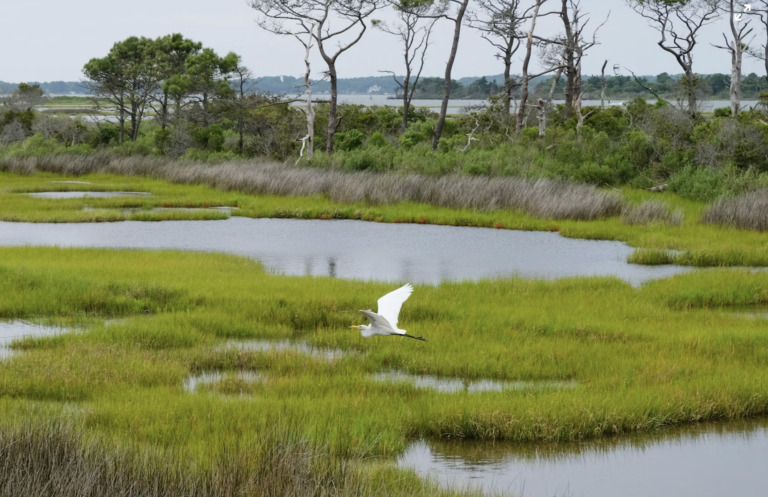
What’s Up With WOTUS?
In recent weeks, you may have seen news stories about “WOTUS” or “Waters of the United States.” The argument over what does, and does not, constitute WOTUS has been around for almost 50 years – as long as the Clean Water Act has been on the books. In this blog, we will provide some background about the WOTUS rule and what it means for the waterways in our
communities.
WOTUS Woes
The Clean Water Act (CWA) was passed in 1972 with an objective to restore and maintain the chemical, physical, and biological integrity of the Nation’s waters. The CWA seeks to achieve that objective through several programs including requiring permits for discharge of pollution into waterways, providing protections for wetlands, and directing states to set water quality standards and create restoration plans to meet those standards.
However, for as long as the CWA has been on the books, there has been disagreement about which waterways do, and do not, receive the protections offered by the Act. The CWA applies to “navigable waters,” which is defined as the “Waters of the United States” (WOTUS). In other words, the protections offered by the CWA only apply to “Waters of the United States.”
For decades, regulated industries argued for a narrow definition of WOTUS – in order to limit the scope of the CWA, while environmental groups argued for a broad definition of WOTUS – in order to expand the protections offered by the CWA. After decades of confusion and litigation, in 2015 the Obama administration adopted the “Clean Water Rule” in an attempt to clearly
define WOTUS, but that rule was challenged in court and repealed in 2019. In 2020, the Trump administration adopted the Navigable Waters Protection Rule, a considerably narrower definition of WOTUS, but that rule was similarly challenged in court and repealed in 2021. In an attempt to create an enduring WOTUS rule, early this year, the Biden administration adopted
the “Revised Definition of ‘Waters of the United States'” rule, which is generally considered more protective than the Navigable Waters Protection Rule, but less protective than the 2015 Clean Water Rule. Soon after its implementation, this rule was blocked in 24 states (including Florida) by a federal district court in North Dakota, prolonging the confusion about the scope of
the CWA.
The differences between the rules are often focused on which wetlands are covered by the CWA and whether ephemeral waterways – rain-dependent streams the flow only after precipitation – are protected by the Act.
Wetlands 101
Wetlands are an under-appreciated ecosystem. They serve water quality filtration functions, aquifer recharge, and provide habitat as well as flood water retention, which is obviously critically important with increasing flood events and water quality issues. The health of wetlands also impacts larger waterbodies to which they are hydrologically connected.
Florida, as an example, contains more wetland area than any other state in the continental United States, but it is estimated that Florida has lost 9.3 million acres of its wetlands, or approximately half of its historical coverage.
When wetlands are included within the definition of WOTUS, and protected by the CWA, developers are required to obtain a permit before filling in wetlands and are subject to regulations that protect wetlands. If a wetland is not covered by the definition of WOTUS, then it will not be protected by the CWA and can be legally damaged or destroyed, regardless of the
broader water quality impacts.
SCOTUS on WOTUS
As if the back-and-forth about the definition of WOTUS wasn’t confusing enough, the looming Supreme Court of the United States (SCOTUS) decision in Sackett v. EPA, threatens to muddy the waters even further (pun totally intended). The Sacketts, Idaho landowners, brought this lawsuit backed by polluting industries in an attempt to limit the reach of the CWA. In 2007, the couple purchased property near Priest Lake, one of the largest lakes in Idaho. EPA told them that they were required to obtain a wetland permit before developing it. Instead of obtaining the permit, the Sacketts brought a lawsuit claiming that the EPA does not have the jurisdiction to regulate the wetland on their property, kicking off a legal battle that has spanned well over a decade. While on its face, this might seem like an argument over a single-piece of land, this case could actually have enormous impacts on waterways across the country. This lawsuit was designed by industry polluters specifically to undermine CWA protections. The Supreme Court’s decision is due any day now and could dramatically change EPA’s authority to enforce the CWA.
Locals Leading
Due to the immense confusion about wetlands protections at the state and federal level, many local governments have stepped up and adopted local regulations to protect their wetlands. Some local governments require large vegetated buffers around wetland areas. Some are pursuing ‘no net loss’ in wetlands, by requiring wetlands destroyed within their boundaries to be replaced within their boundaries. By adopting these protections, local governments are working to ensure that the valuable ecosystem services that are provided by wetlands remain in their communities. However, new laws backed by industry polluters threaten to limit the power of local governments to protect their wetlands and other natural resources.
What’s Next for WOTUS?
As we await the decision in the Sackett case, we anticipate that the fight over Waters of the United States is far from over. As Waterkeepers, we will continue to work to defend the integrity of the CWA and the waterways and communities that it protects.
Jen Lomberk is the Matanzas Riverkeeper in Florida.